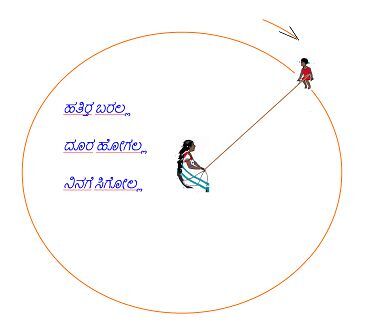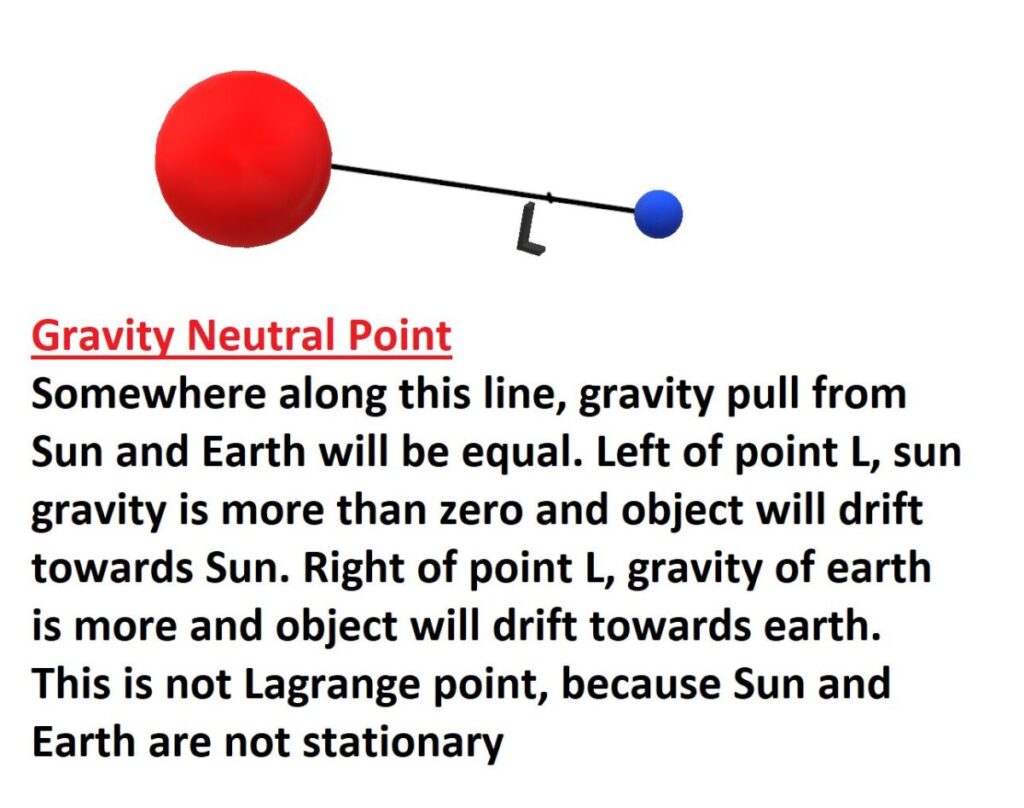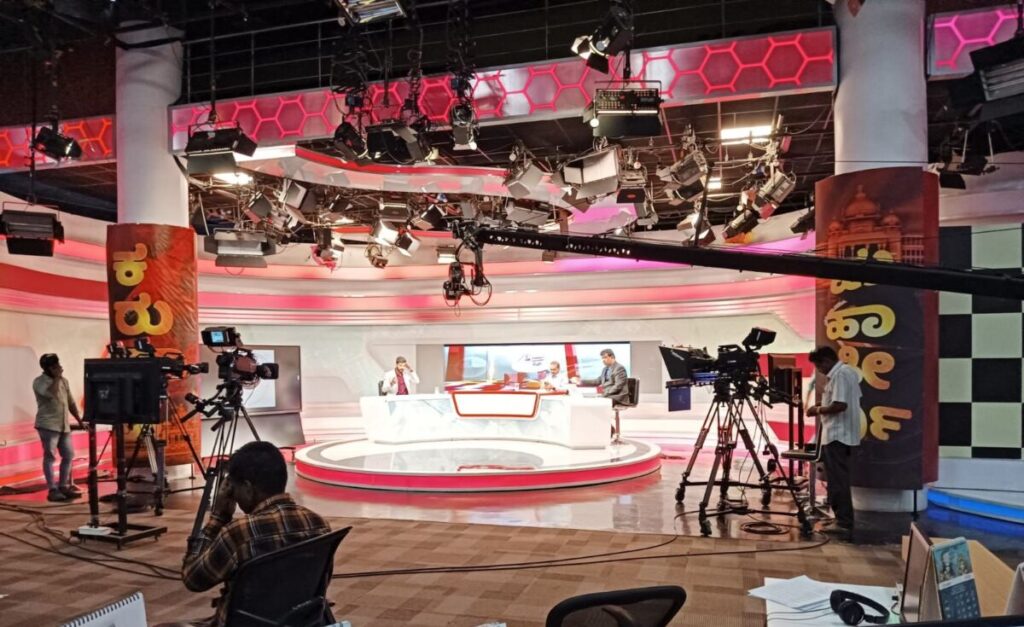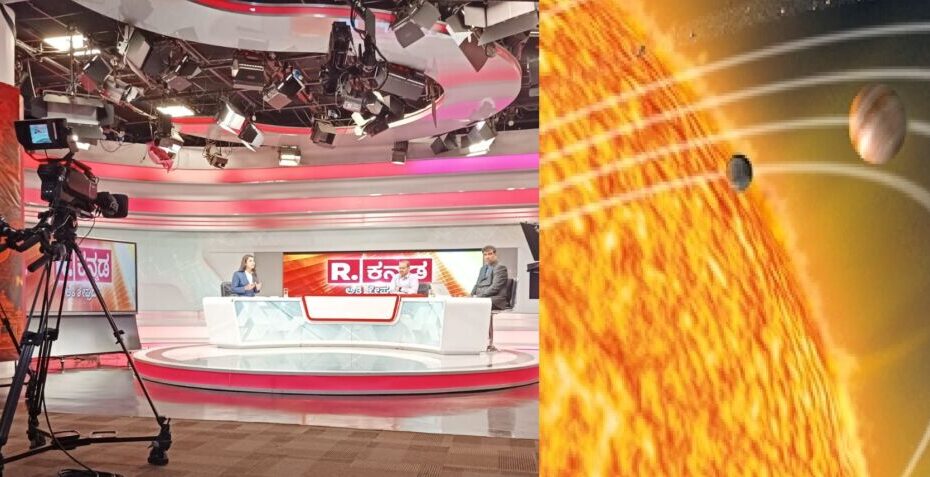I was invited by Digvijaya News Channel from Bangalore (Republic Kannada) to explain the workings of India’s Adithya L1 mission. This mission from India holds immense significance in the realm of space exploration, as it embarks on a mission to explore our very own star, the Sun. This also indicates the fact that Indian Space program has come of age as India is now seriously exploring solar systems. In other words, this development also underscores the maturation of the Indian Space Program, signifying that India has now taken substantial strides into the realm of solar system exploration with dedicated spacecraft missions. It’s a testament to India’s growing prowess and commitment to unraveling the mysteries of our cosmic neighborhood. To help the public understand this mission and its complex journey, I was tasked with providing a crash course in orbital mechanics.
Orbital mechanics might sound like an intimidating topic, often associated with complex equations and intricate calculations. However, my aim was to break down these concepts into bite-sized pieces that anyone, regardless of their scientific background, could comprehend.
At its core, orbital mechanics is governed by Sir Isaac Newton’s laws of motion and gravity, which are much more approachable than they might initially seem. Speaking in Kannada and using terms understandable to local culture made it far more easier to understand these concepts. Understanding orbital mechanics becomes more accessible when we realize that objects in orbit are essentially in a state of constant freefall. It’s like throwing a ball forward with enough speed that, as it falls towards the Earth, it keeps missing the ground. This perpetual ‘falling’ is what creates an orbit. As shown in the picture, orbit is the circular path taken by the body even though the velocity is perpendicular to center of mass exerting the gravitational force. This has been pictorially represented here as mother and daughter playing with a rope with mother in the center and child running across. The rope happens to be the invisible force of gravity.


The Adithya L1 mission itself is an incredible feat of engineering and science. It’s journeying to a unique point in space called the L1 Lagrange point, where the gravitational forces between the Earth and the Sun create an equilibrium stable point. This allows the spacecraft to ‘hover’ in a stable position, providing an ideal vantage point to study the Sun. This minimizes fuel requirements for orbit keeping at this location.
One common misconception about the L1 Lagrange point is that people believe the gravitational pull from Earth and the Sun cancel out at this location. This may be true if objects are stationary but in reality both earth and sun are rotating and are in motion and hence at L1, there is gravity with an orbital time period same as earth. Therefore, a spacecraft placed at this point is always visible to earth for line of sight communication (even though earth is rotating on its axis, hence multiple deep space network is needed for such communication).

To reach this point, the spacecraft goes through a carefully orchestrated sequence of events, including a precisely timed launch and a series of maneuvers using onboard propulsion. Once it reaches L1, Adithya L1 can commence its continuous data collection on the Sun, a mission planned to span five years. The launch is executed using a PSLV rocket and this was the 57th lanuch of this rocket since operation. The launch is performed using ISRO’s ingenious use of the gravity assist method, also known as the sling shot method, has been a hallmark of their interplanetary missions. This method, employed since Chandrayaan 1, Mangalyaan, Chandrayaan 2, Chandrayaan 3, and now Adithya L1, leverages Earth’s gravity to gain additional velocity (delta V), significantly reducing the mission’s fuel requirements. The launch was total success with all rocket stages performing normally.
The Aditya-L1 mission is poised to address several significant scientific objectives, which collectively contribute to advancing our understanding of the Sun’s enigmatic upper atmosphere, including the chromosphere and corona:
Study of Solar Upper Atmospheric Dynamics: This mission aims to closely examine and analyze the dynamic behaviors occurring in the Sun’s upper atmospheric layers, shedding light on their intricate movements and phenomena.
Chromospheric and Coronal Heating: A fundamental question in solar science is how and why the Sun’s outer layers, the chromosphere, and the corona, are significantly hotter than its surface. Aditya-L1 will play a pivotal role in studying these regions, helping us unravel the mysteries behind this heating phenomenon.
Physics of Partially Ionized Plasma: The Sun’s outer layers contain a unique type of plasma that is only partially ionized. Investigating this partially ionized plasma will provide valuable insights into its complex physics and behavior under extreme solar conditions.
Initiation of Coronal Mass Ejections: Coronal Mass Ejections (CMEs) are explosive events on the Sun that release massive amounts of energy and charged particles into space. Aditya-L1 aims to understand the underlying mechanisms that trigger these powerful solar eruptions, which can impact space weather and communication systems on Earth.
Study of Solar Flares: Solar flares are intense bursts of energy and radiation originating from the Sun’s surface. This mission will contribute to our knowledge of the processes behind solar flares, helping us better predict and mitigate their potential effects on our technology and space activities.

In conclusion, being able to present this crash course on orbital mechanics and the Adithya L1 mission is not only a privilege but also an exciting opportunity to share the wonders of space science with the public. By simplifying complex concepts and using relatable examples, we can ensure that everyone can appreciate the marvels of space exploration and gain a deeper understanding of missions like Adithya L1. Also it is worth to note that Indian Space program has evolved beyond being solely driven by self-sufficiency in our space program. Instead, we have reached a level where we stand shoulder to shoulder with organizations like NASA and ESA, actively conducting space missions with a deep scientific focus to expand our understanding of the cosmos.
